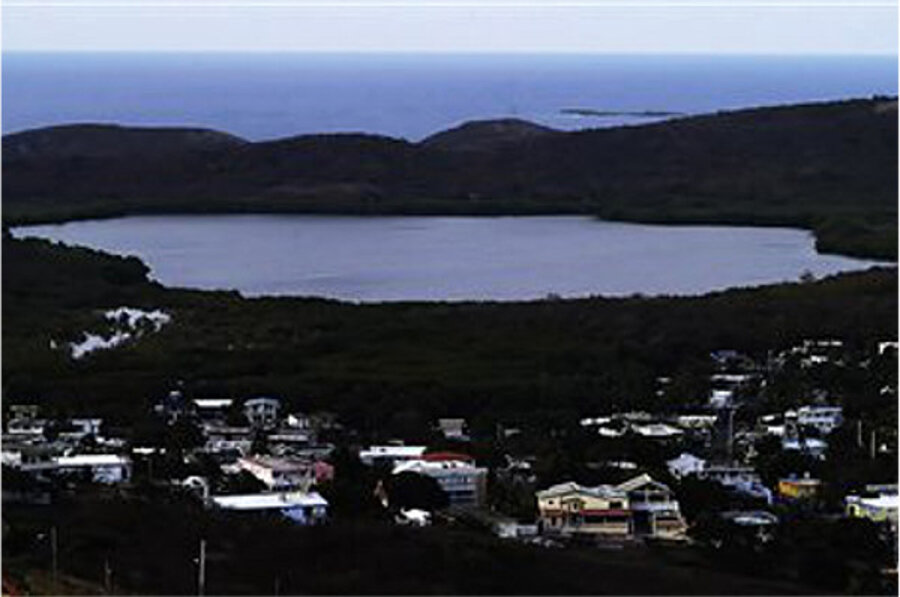Bioluminescent bay goes dark: What happened?
Loading...
| SAN JUAN, Puerto Rico
A glowing lagoon off Puerto Rico's northeast coast has gone nearly dark and biologists on Tuesday were trying to find out why.
Theories range from an increase in construction runoff to inclement weather to people clearing mangroves to allow larger boats into the area.
"We have been compiling data," Carmen Guerrero, secretary of the Department of Natural Resources, said in a phone interview as she headed toward Las Cabezas de San Juan Nature Reserve with a team of scientists to investigate the problem. "There are a lot of factors that could be at play."
The bioluminescent lagoon, often referred to as a bay, attracts tourists who set out in kayaks or boats by night from the neighboring city of Fajardo to see waters that glow when microscopic organisms are disturbed. A greenish light swirls off hands and arms as visitors trail them through the water.
But the bioluminescence has dropped so much that tour operators have had to cancel trips and reimburse visitors, Guerrero said.
Fajardo Mayor Anibal Melendez told reporters that the lagoon has been dark for at least eight days.
"We've never seen anything like that," he said.
Melendez blamed runoff from the construction of a nearby water and sewer treatment plant, and he has asked that the plant be moved elsewhere.
Officials involved with the plant deny it's the cause. But as a preventive measure, the government temporarily suspended construction at the project for two weeks until scientists from various agencies including the US Geological Survey can figure out what is causing the problem, Guerrero said.
She stressed that officials do not know if possible construction runoff is to blame. Recent rains and a storm that is generating heavy waves is another possibility for affecting the lagoon's bioluminescence, Guerrero said.
"It's important to give these experts room so they can do their job and help us understand what happened in the lagoon and why it has temporarily lost some of its brightness," she said.
Alberto Lazaro, president of the state Water and Sewer Authority, said he will evaluate scientists' findings before deciding how to proceed in several weeks.
He said the treatment plant is needed because people are discharging sewage into the lagoon and nearby ocean. The plant, which is to be completed by 2016, was approved by the territory's Department of Natural Resources and the U.S. Environmental Protection Agency, which is providing the funding.
"The goal of the project is to conserve this valuable resource, and we have designed and developed this project taking all those requirements into account," Lazaro said.
Laura Velez, who heads the government Environmental Quality Board that monitors such projects, said that the treatment plant has had adequate erosion and sediment control and that officials have regularly inspected it to ensure compliance with environmental standards.
The Conservation Trust of Puerto Rico, which manages the lagoon and surrounding areas, collects water samples three times a week to record data including temperature, salinity and precipitation. Guerrero said scientists will analyze that data to help solve the mystery of the darkening lagoon.
Miguel Sastre, a biology professor at the University of Puerto Rico who has long studied Fajardo'sbioluminescent lagoon, one of three in the territory, said it went nearly dark in 2003 for unknown reasons, but rebounded a couple of months later.
He said in a phone interview that his main concern this time is the construction of the water and sewage treatment plant because it coincides with the drop in bioluminescence.
"We have to take action and evaluate the situation," Sastre said. "We should do our utmost to help preserve these sites."







